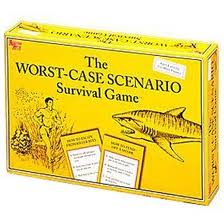Unless you’ve been living under a rock, you probably heard that the Fifty Shades of Grey books out-sold Harry Potter. Famous for their explicit sex scenes, the trilogy has been lampooned by everyone from late night TV hosts including Saturday Night Live to serious authors.
I actually liked the Fifty Shades books; thought they were fun so I thought it might be even more fun to see if technical communicators might be able to leverage the books’ popularity. Without further ado, I present to you my Fifty Shades of Tech Comm, in the hopes it will do for RTFM* what Fifty Shades of Grey did for BDSM.
* Read the F*cking Manual
HOW TO CLEAN A MOUSE
With a frustrated sigh, Annabella Heron tossed her long chestnut locks over her shoulder and lugged her Dell desktop computer out of the back of her Mini Cooper – affectionately called Minnie by her gorgeous rich blonde roommate Katrina – to haul it inside the sleek glass doors of Silver Enterprises Xpress.
S.E.X.
Annabella rolled her eyes – and sprawled onto her perfectly heart-shaped rear end when the door suddenly opened. Cradling her beloved Inspiron to her perfectly round breasts, she tried to catch her breath, only to lose it all over again when the most perfectly perfect male hand reached out to help her. Staring at the large palm, the extra long fingers, Annabella had to remind herself to breathe.
Breathe, Annabella.
The hand, Annabella discovered when she finally looked up, was attached – as hands are wont to do – to the most outrageously gorgeous man she’d ever seen. He was tall. He was muscular. He was obviously rich since he wore a diamond ring on his thumb – his thumb! How sexy.
“Miss?”
His voice – it was like honey. Or velvet. Or silk. Or silky velvety honey. Or something. It washed over her and Annabella had to remind herself to breathe.
Breathe, Annabella.
She drew in a big ol’ helping of air and sighed happily. He smelled as good as he looked. Not like that guy on the bus that time, the one that smelled like an old cigarette butt that had grown armpit hair. She shivered and thrust her Inspiron into his outstretched hand – the one with the long fingers.
With one hand, he lifted it and took it to the silver table in the center of the shop, running his long fingers over its lines and curves.
“What’s the problem?”
Annabella swallowed. Hard. “Um. It’s not doing what I say. I have an appointment with Mr. Silver to take a look at it.” She climbed back to her feet.
Two gorgeous grey eyes snapped to hers but only one eyebrow lifted. How could he do that, she wondered? She tried to raise only one of her eyebrows but both went up.
“Have you tried saying ‘Please’?”
“Yes, of course but it still doesn’t obey.”
His lips curled up in a wicked grin. “And… obeying… is something you want? Something you… need.”
“It’s a computer, so yes, obeying my commands is important.” Where was he going with this? Annabella wondered.
“So… you like having… control.”
Annabella blinked up at him because he was tall. “It’s a computer, so yes, I like to be able to control it. Can you tell Mr. Silver I’m here?”
“I’m Duarte Silver.”
Duarte. Annabella repeated his name a few times silently. It sounded sexy even in her mind. Which was funny, since her mind was usually not the least bit sexy.
At least, that’s what all the guys always told her.
“I’m Annabella Heron.”
“Yes, I know.”
How could he know her name? Annabella stared blankly until he smirked and pointed to her perfectly round breasts.
“It says so right there.”
She looked down and saw her name tag pinned to her shirt. His long fingers slid under her chin, lifted it and she was pinned by his steely gray eyes. “Trust me?” He smirked down at her.
Dumbly, she nodded. How could she not trust him? Sure, she’d only met him a second ago, but he was tall. And muscular. And had a diamond thumb ring. And really long fingers. Of course she’d trust him. With her life.
With a triumphant grin, he whipped a tool from his pocket and she gasped. “What…what are you going to do with that?”
“Why, Miss Heron… I’m going to give you exactly what you want. What you need. Total control. Now. Come here.”
Annabella bit her lip, gulped, and then coughed for several minutes. She reminded herself never to do both at the same time again.
Never try to bite your lip and swallow at the same time again, Annabella.
“Take this.” He ordered.
“What….what is it?”
“It’s a cable. I want you to grasp it…firmly… and give it a tug.”
“I…I…I’ve never done this before.” She stammered.
“That’s okay. I have.” He grinned wickedly because wicked grins were apparently all he knew how to do. His hands with their extra long fingers guided hers to the USB port on the rear of her desktop and… pulled.
Hard.
Annabella felt the connection break.
He took her mouse and placed it belly up on the long silver table. With the tool from his pocket, he ran the tip along the cover that restrained the ball. With a flick of his hand, the cover was gone and the ball… exposed.
“Hold out your hand.” He ordered commandingly.
Annabella obeyed. He dropped the ball into her palm. She rolled it between her fingers. Too bad they weren’t long like his.
“That’s it. Now… blow.”
“What?” Annabella gasped.
“The dust. Blow the dust off the ball.”
Dust. Right.
Annabella puckered her lips into a pout and blew. Dust got in her eyes and she blinked while Duarte Silver put the ball back into the mouse and replaced the cover.
“All done. Control is… yours.”


